Teensy 4.1 features the fastest micocontroller and an expanded set of powerful peripherals in a 2.4 by 0.7 inch form factor.
Teensy 4.1 uses the same processor as Teensy 4.0, but provides greater I/O capability, including an ethernet PHY, SD card socket, and USB host port. Teensy 4.1 also comes with 4X larger flash memory, and has 2 locations to optionally add more memory.
Specifications:
- ARM Cortex-M7 at 600 MHz
- Float point math unit, 64 & 32 bits
- 7936K Flash, 1024K RAM (512K tightly coupled), 4K EEPROM (emulated)
- QSPI memory expansion, locations for 2 extra RAM or Flash chips
- USB device 480 Mbit/sec & USB host 480 Mbit/sec
- 55 digital input/output pins, 35 PWM output pins
- 18 analog input pins
- 8 serial, 3 SPI, 3 I2C ports
- 2 I2S/TDM and 1 S/PDIF digital audio port
- 3 CAN Bus (1 with CAN FD)
- 1 SDIO (4 bit) native SD Card port
- Ethernet 10/100 Mbit with DP83825 PHY
- 32 general purpose DMA channels
- Cryptographic Acceleration & Random Number Generator
- RTC for date/time
- Programmable FlexIO
- Pixel Processing Pipeline
- Peripheral cross triggering
- Power On/Off management
Compare detailed specifications of all Teensy models.
| Feature | Teensy 4.1 | Teensy 4.0 |
|---|---|---|
| Ethernet |
10 / 100 Mbit DP83825 PHY (6 pins) | -none- |
| USB Host |
5 Pins with power management | 2 SMT Pads |
| SDIO (4 bit data) | Micro SD Socket | 8 SMT Pads |
| PWM Pins | 35 | 31 |
| Analog Inputs | 18 | 14 |
| Serial Ports | 8 | 7 |
| Flash Memory | 8 Mbyte | 2 Mbyte |
| QSPI Memory |
2 chips Plus Program Memory | Program memory only |
| Breadboard Friendly I/O | 42 | 24 |
| Bottom SMT Pad Signals | 7 | 16 |
| SD Card Signals | 6 | 0 |
| Total I/O Pins | 55 | 40 |
- Arduino IDE + Teensyduino:
- Arduino's IDE software with the Teensyduino add-on is the primary programming environment for Teensy. On Windows, Linux and old Macs, Arduino is installed first and then the Teensyduino installer adds Teensy support to the Arduino IDE. On newer Macs, an all-in-one download is provided. Teensyduino includes a large collection of libraries which are tested and optimized for Teensy. Other libraries may be installed manually or by Arduino's library manager.
- Visual Micro:
- Visual Micro allows use of Microsoft Visual Studio to program Arduino compatible boards, including Teensy. Only Windows is supported. Visual Micro is commercial paid software.
- PlatformIO:
- PlatformIO IDE is a cross platform development environment with many advanced features. Windows, Linux and Macintosh are supported.
- CircuitPython:
- CircuitPython provides a .HEX file which you program onto Teensy 4.1 using Teensy Loader. Then Teensy appears to your computer as a USB disk, where copy or save your Python code. CircuitPython does not fully support all of Teensy 4.1's hardware.
- Command Line with Makefile:
- Makefiles for non-graphical use are provided with the Teensyduino installer.
- Teensy 4.x: {Arduino}/hardware/teensy/avr/cores/teensy4/Makefile
- Teensy LC & 3.x: {Arduino}/hardware/teensy/avr/cores/teensy3/Makefile
- Performance:
- ARM Cortex-M7 brings many powerful CPU features to a true real-time microcontroller platform. CPU performance is many times faster than typical 32 bit microcontrollers.
- Dual Issue Superscaler Architecture:
- Cortex-M7 is a dual-issue superscaler processor, meaning M7 can execute 2 instructions per clock cycle, at 600 MHz! Of course, executing 2 simultaneously depends upon the compiler ordering instructions and registers. Initial benchmarks have shown C++ code compiled by Arduino tends to achieve 2 instructions about 40% to 50% of the time while performing numerically intensive work using integers and pointers.
- Floating Point Unit:
- The FPU performs 32 bit float and 64 bit double precision math in hardware. 32 bit float speed is approximately the same speed as integer math. 64 bit double precision runs at half the speed of 32 bit float.
- Tightly Coupled Memory:
- Tightly Coupled Memory is a special feature which allows Cortex-M7 fast single cycle access to memory using a pair of 64 bit wide buses. The ITCM bus provides a 64 bit path to fetch instructions. The DTCM bus is actually a pair of 32 bit paths, allowing M7 to perform up to 2 separate memory accesses in the same cycle. These extremely high speed buses are separate from M7's main AXI bus, which accesses other memory and peripherals.
- Cache:
- Two 32K caches, one for instructions and one for data, are used to speed up repetitive access to non-TCM memory.
- Branch Prediction:
- Cortex-M7 is the first ARM microcontroller to use branch prediction. On Cortex-M4 & earlier, loops and other code which much branch take 3 clock cycles. With M7, after a loop has executed a few times, the branch prediction removes that overhead, allowing the branch instruction to run in only a single clock cycle.
- Digital Signal Processing:
- DSP extension instructions accelerate signal processing, filters and Fourier transform. The Audio library automatically makes uses of these DSP instructions.
- Teensy 4.1 has a total of 55 input/output signal pins. 42 are easily accessible when used with a solderless breadboard.
- This pinout reference card comes with Teensy 4.1.
- Pinout Card Files: Front Side (PDF) / Back Side (PDF)
- Cards printed before September 2021 incorrectly showed pin 53 with PWM.
Digital Pins:
- Digital Input Pins:
- Digital pins may be used to receive signals. Teensy 4.1 pins default to INPUT most with a "keeper" resistor. Teensy 4.1 pins accept 0 to 3.3V signals. The pins are not 5V tolerant. Do not drive any digital pin higher than 3.3V.
- Input Pullup / Pulldown / Keeper Resistors:
- All digital pins have optional pullup, pulldown, or keeper resistors. These are used to keep the pin at logic HIGH or logic LOW or the same logic level when it is not being actively driven by external circuity. Normally these resistors are used with pushbuttons & switches. The pinMode function with INPUT_PULLUP or INPUT_PULLDOWN must be used to configure these pins to input mode with the built-in resistor.
- Pin Change Interrupts:
- All digital pins can detect changes. Use attachInterrupt to cause a function to be run automatically. Interrupts should only be used for clean signals. The Bounce library is recommended for detecting changes on pushbuttons, switches, and signals with noise or mechanical chatter.
- Digital Output Pins:
- All digital pins can act at output. The pinMode function with OUTPUT or OUTPUT_OPENDRAIN must be used to configure these pins to output mode. The digitalWrite and digitalToggle functions are used to control the pin while in output mode. Output HIGH is 3.3V. The recommended maximum output current is 4mA.
- Pulse Width Modulation (PWM):
- 35 of the digital pins support Pulse Width Modulation (PWM), which can be used to control motor speed, dim lights & LEDs, or other uses where rapid pulsing can control average power. PWM is controlled by the analogWrite function. 22 groups of PWM can have distinct frequencies, controlled by the analogWriteFrequency function.
- Slew Rate Limiting:
- This optional feature greatly reduces high frequency noise when long wires are connected to digital output pins. The rate of voltage change on the pin is slowed. The extra time is only nanoseconds, which is enough to lower undesirable high frequency effects which can cause trouble with long wires.
- Variable Drive Strength:
- The output impedance of each digital output may be controlled in 7 steps, ranging from 150 ohms (weakest) up to about 21 ohms (strongest).
- Adjustable Output Bandwidth:
- Digital output bandwidth is also programmable, in 4 steps: 50, 100, 150 and 200 MHz.
- LED Pin:
- Pin 13 has an orange LED connected. The LED can be very convenient to show status info. When pin 13 is used as an input, the external signal must be able to drive the LED when logic HIGH. pinMode INPUT_PULLUP should not be used with pin 13.
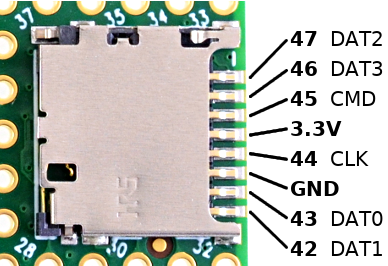
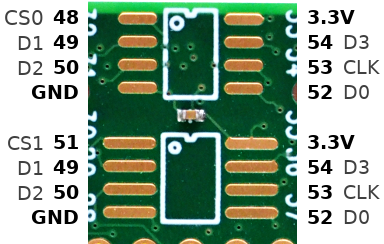
Code Security:
- Program Memory Protection:
- Code security protects your program code from unauthorized access and coping. When compiling, your program is encrypted. When run, the IMXRT Bus Encryption Engine provides on-the-fly decryption as your program executes. If an attacker removes and reads the flash memory chip from Teensy 4.1, or attempt to capture the USB communication from Teensy Loader, or copies the EHEX file Teensy Loader opens, they get only an encrypted copy of your program.

- Secure Firmware Update:
- Users can be given an EHEX file and Teensy Loader to securely update commercial products or secure applications which embed a Lockable Teensy, without gaining access to the original program code. Of course the key already in its fuse memory and secure mode locked when the product is shipped.
- Permanent Secure Mode:
- Brand new Teensy 4.1 can only run unencrypted programs. Once a key is written into fuse memory, either encrypted or unencrypted programs can run. Secure mode permanently disables the ability to run unencrypted code, and activates hardware security features.
- Lockable Teensy:
- Secure mode can only be activated on Lockable Teensy. While Standard and Lockable Teensy are identical hardware, the permanent fuse configuation differs. Standard Teensy does not allow changes to fuses affecting boot or other critical configuration. Standard Teensy is meant to safe from "bricking" by programs which could write to fuse memory, but this safety means secure mode can not be activated. Standard Teensy can have a key written and can run encrypted code, but encryption alone is not fully secure. Only Lockable Teensy provides proper code security, and only when a key is written and secure mode is locked.
- Authentication:
- The encryption process includes digital signature authentication. In secure mode, this signature is checked before any code can be decrypted.
- JTAG Disable:
- Secure mode permanently disables the JTAG port. To enter programming mode without JTAG, Teensy Loader and the EHEX file automatically utilize a loader utility which is authenticated by your key's digitial signature, and in turn uses secure hash checks to fully authenticate all components of the programming process.
- EHEX File Format:
- Teensyduino packages your encrypted code, metadata, a startup shim, loader utility, digital signatures and other essential details into a single EHEX file. This EHEX may be given to customers or untrusted parties to perform code updates with the convenice of a single file. The EHEX format and encryption details are documented on the code security page
- Key Management:
- To make creating and using your key simple, Teensyduino adds a "Teensy 4 Security" window to the Arduino Tools menu. These functions can also be accessed from a command line utility for use from non-Arduino tools or automated scripts.
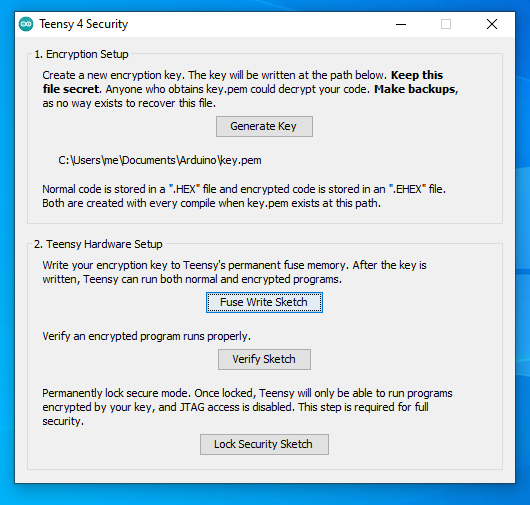
Special Features:
- Nested Interrupt Controller:
- Priority nesting allows low latency for critical interrupts while lower priority interrupts are in use. Teensyduino's libraries utilize interrupt nesting with priority level defaults which allow many types of libraries to work well when used together.
- Direct Memory Access (DMA):
- Teensy 4.1 has a general purpose 32 channel DMA controller. Optimized Audio, LED and display libraries make uses of these DMA channels. A DMAChannel.h abstraction layer is provided. The USB device, USB host, SD card and Ethernet peripherals also have specialized DMA engines built in.
- Random Number Generator:
- True random number hardware is capable of generating random data at (TBD) rate. The Entropy library is used to access the random number generator.
- Cryptographic Acceleration:
- Symetric ciphers and one-way hash can be computed by hardware, but currently no library support exists to utilize this hardware.
- Temperature Sensor:
- A built in temperature sensor allows reading the temperature inside the main chip. The InternalTemperature library can be used to access this sensor.
Documentation:
- IMXRT1060 Manual - All the useful peripheral programing info
- IMXRT1060 Datasheet - Only the electrical specifications
- W25Q64JV-DTR Datasheet - Flash memory chip
- DP83825i Datasheet - Ethernet PHY chip
- ARM Cortex-M7 Reference Manual
- ARM v7-M Architecture Reference Manual - ARM Processor low-level details - free, but difficult to read
- RoHS Certificate of Compliance
Package Includes :
- 1 x Teensy 4.1 Development Board
| Processor Specifications | |
| Micro Processor | ARM Cortex-M7 |
| Frequency | |
| Frequency Range | 600 MHz |
Teensy 4.1 Development Board
- Brand: Sparkfun
- Product Code: SFE-Teensy-4.1
- Reward Points: 31
- Availability: In Stock
-
रo 3,114.00
- Price in reward points: 3114
-
- 5 or more रo 3,089.00
- 10 or more रo 3,064.00
- 25 or more रo 3,039.00
- 50 or more रo 3,015.00
Available Options
Related Products
USB Host Cable For Teensy 3.6 or Teensy 4.1
This short cable allows connecting a USB device, or a USB hub to Teensy 3.6 or Teensy 4.1.Teensy 3.5..
रo 316.00
Ethernet Kit for Teensy 4.1
This kit has all the parts needed to connect to the Ethernet port on Teensy 4.1.This kit includes an..
रo 416.00
Teensy++ 2.0
The Teensy++ USB Development Board is a complete USB-based microcontoller development system. Only a..
रo 2,357.00 रo 2,185.00
Teensy LC - Development Board
Teensy-LC (Low Cost) is a powerful 32 bit microcontroller board, with a rich set of hardware periphe..
रo 1,229.00 रo 1,194.00
Teensy 3.2
Teensy 3.2 features a 32 bit ARM processor. Teensy 3.2 is a direct, 100% compatible replacement ..
रo 1,730.00 रo 2,005.00
Audio Shield For Teensy 4.0 (Rev D)
This audio adaptor lets you easily add high quality 16 bit, 44.1 kHz sample rate (CD quality) audio ..
रo 1,721.00 रo 1,032.00
USBNinja
USBNinja is an information security and penetration testing tool that looks and functions just like ..
रo 13,710.00
Adafruit 4828 SmartMatrix SmartLED Shield for Teensy 4
The SmartLED Shield gives you an easy way to connect up a Teensy 4 or a Teensy 4.1 to one of our RGB..
रo 2,423.00
Adafruit 4763 GD25Q16 - 2MB SPI Flash in 8-Pin SOIC Package
These little chips are like miniature SSD drives for your electronics. When you don't need something..
रo 135.00
PSRAM Chip for Teensy 4.1
This PSRAM chip can add 8 Megabytes of RAM for use on Teensy 4.1.The following PSRAM chips have been..
रo 248.00
Adafruit 255 ChronoDot - Ultra-precise Real Time Clock - v3
The ChronoDot V3 is the latest version of macetech’s popular ChronoDot line of products. Designed du..
रo 2,125.00
Teensy Header Kit
These headers are made to work with the Teensy 3.2 and Teensy LC development boards. Each kit of hea..
रo 280.00

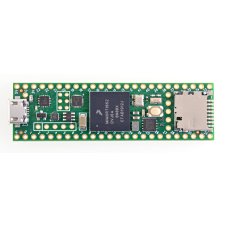



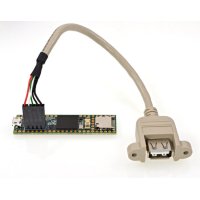
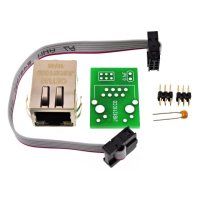
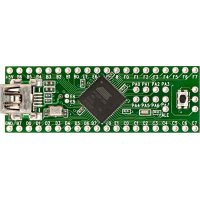
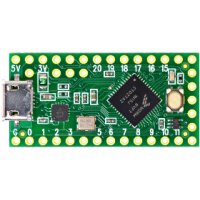
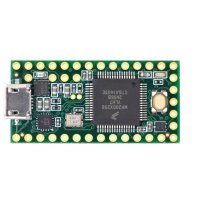
-200x200.jpg)
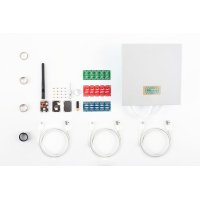
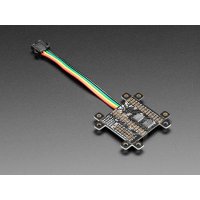
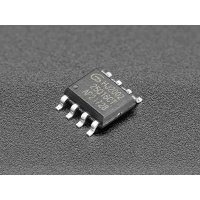
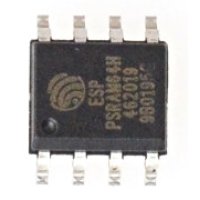
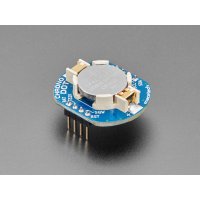
-200x200.png)
